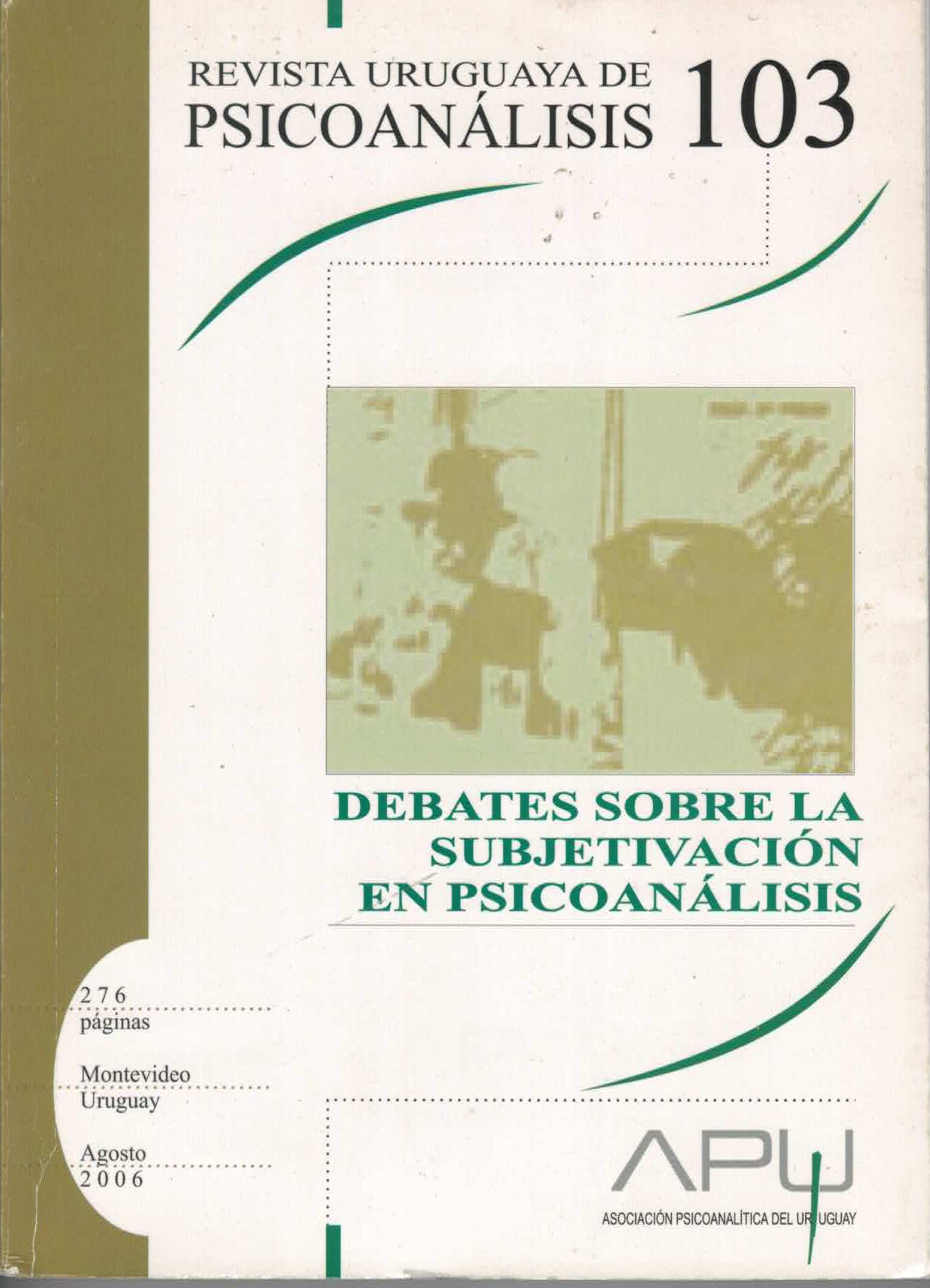Subjectivity in the analytical scene. Appearances, superficiality and complexity
Keywords:
imagen, ilusión, sujeto, cambio, cultura, subjetivaciónAbstract
The image is present in any process of subjectivization through the identifications and the breaking free of the symbolic moorings,
which become visible in the changes of the social paradigms. Appearance, immerse in the notion of superficiality and in
debt with language, like any human production, is closely related to the iconic and indicial aspects of symbolization.
“In the analytic scene, the image, together with the experience with the object, ties together the materiality of the sensorial and
the affect of unconscious writing” Excess, the hybris, both in aesthetics and in the media, implies Subjetividad en la escena analítica.
the desire to somehow reach a non-existent completeness. The illusory gains room at the expense of illusion. The notion of chaos,
the loss of certainties which our culture experiences, sustains, in its uncertainty, many elements which can promote vulnerabilities,
but also sublimation and creativity. This paper proposes that the notion of superficiality, so widespread in our social life, results in
a defensive avoidance of complexity. These notions are developed in the text together with the contributions by Morin, whose ideas
on love exemplify the paradoxical elements that, from the psychoanalytic perspective, support the notion of complexity.
With Walter Benjamin, the paper emphasizes the rescue of the legacy of the past, which becomes pertinent to our subject,
where the marks of the indifference both in the parental and collective spheres interrogate psychoanalysis
Downloads
References
AUSTIN, J. (1982) Cómo hacer cosas con palabras, Paidós, Buenos Aires, 1982.
BENJAMIN, W. (1936) El narrador en ‘Para una crítica de la violencia y otros ensayos. Iluminaciones IV’. Editorial Taurus, Madrid, 1998.
CASAS DE PEREDA, M. (1999) ‘Juego y simbolización’ en ‘En el camino de la simbolización, Producción del sujeto psíquico’. Paidós, Buenos
Aires.
(2001) ‘El discurso y el método psicoanalítico’. Presentado en IPAC 2001 Niza. Publicado en RUP 94 (Revista Uruguaya de
Psicoanálisis) 2001
(2002) ‘El cuerpo en el discurso’. Presentado en Congreso ‘El cuerpo en Psicoanálisis’ APU 2002 y Congreso FEPAL 2002,
(2002-a) ‘Metapsicología. Desafíos’. Presentado en Congreso FEPAL 2002, Foro electrónico. Montevideo.
(2004) ‘Introducción al texto El Cuerpo en el discurso’ Presentado en Conferencia Latinoamericana del IJPA, 2004, Río de
Janeiro.
COROMINAS, J. (1973) Diccionario etimológico de la lengua castellana, Editorial Gredos Madrid, Tercera Edición 1973.
LACAN, J. (1946) Acerca de la causalidad psíquica, en Escritos 1, Editorial Siglo XXI, Buenos Aires, 1988.
(1956-57) Seminario 4, La relación de objeto. Paidós 1994.
(1971-72) El saber del psicoanalista, Charlas en Saint-Anne. No editado
(1962-63) Seminario 10, La angustia. No editado.
(1964) Seminario 11, Los cuatro principios fundamentales del psicoanálisis Barral Editores, Barcelona 1977.
MC CARTHY, Th. (1992) Ideales e ilusiones. Reconstrucción y deconstrucción de la teoría crítica contemporánea. Editorial Tecnos,
Madrid 1992.
MORIN, E. (1990) Introducción al pensamiento complejo. Gedisa, Barcelona, 2001.
(1994)‘Epistemología de la complejidad’ en Nuevos paradigmas, Cultura y Subjetividad, Paidós, Buenos Aires.
(1997) Amor poesía y sabiduría, Trilce, Montevideo.
SCHIAVONI, G. (1989) “Frente a un mundo de sueños, Walter Benjamín y la enciclopedia mágica de la infancia” en Walter Benjamín, Escritos.
La literatura infantil, los niños y los jóvenes”, Nueva Visión, Buenos Aires, 1989.
SCHNITMAN, D. F. (1994) “Ciencia, cultura y subjetividad” en Nuevos paradigmas, Cultura y Subjetividad, Paidós, Buenos Aires.
ZIZEK S. (1994) ¡Goza tu síntoma! Jacques Lacan dentro y fuera de Hollywood, Buenos Aires 1994.
(2003-a) El sublime objeto de la ideología, Siglo XXI, Argentina.
(2003-b) Las metástasis del goce. Ed.Paidós Buenos Aires 2003.



 This work is licensed under a
This work is licensed under a 